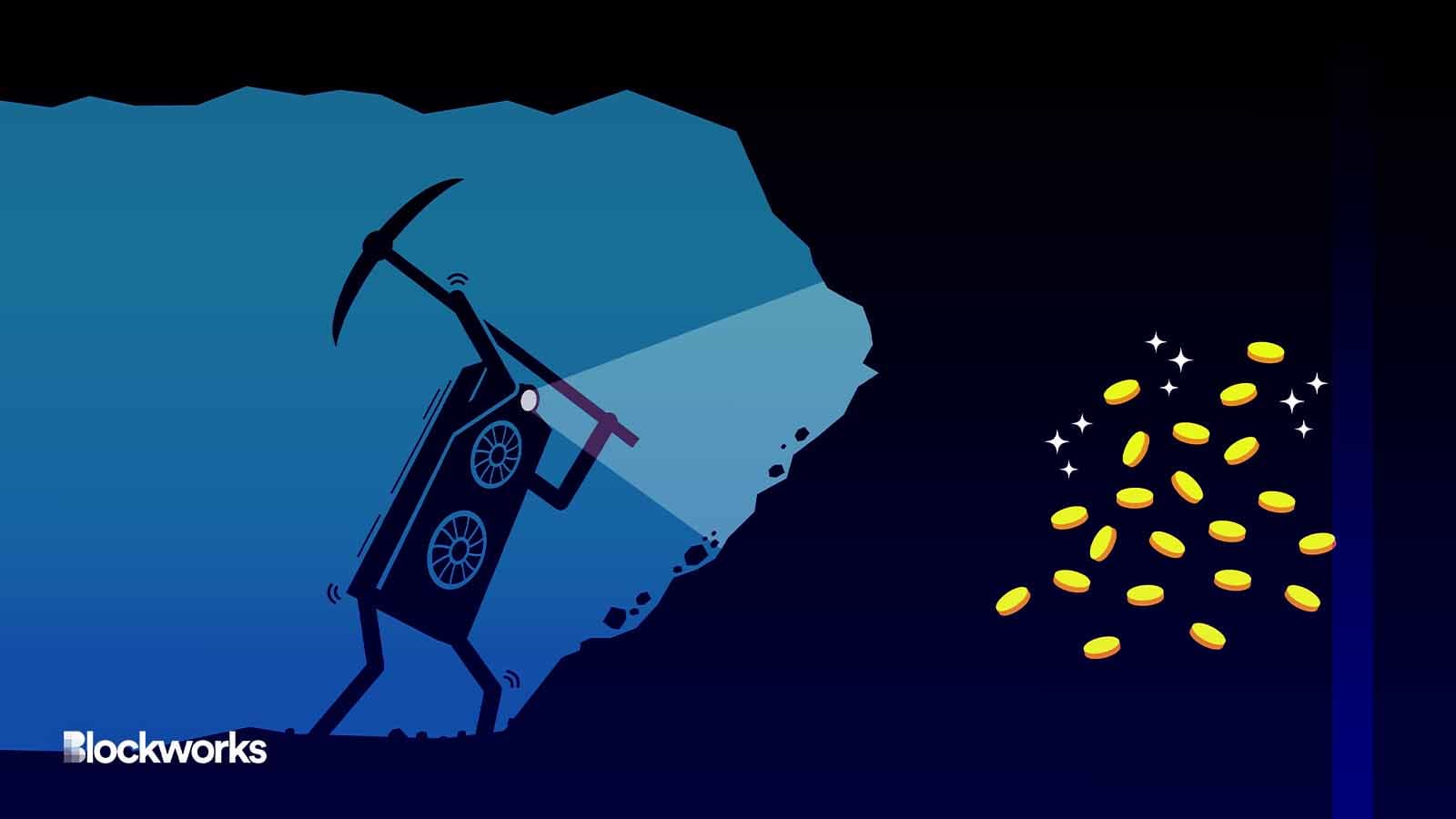Bitcoin hash price drops to near all time low
Despite historically high global hashrate, the revenue a miner can expect is down to its lowest levels in since FTX collapse

Leremy/Shutterstock modified by Blockworks
As the bitcoin halving nears, the hash price for bitcoin — the amount of revenue a miner should anticipate per petahash per second of hashing power — has plummeted from a yearly high in early May.
Miners were netting around $127 a day per petahash per second (PH/s) on May 8. As of Monday, Aug. 28, a miner can only expect $59 a day with each PH/s they have, according to data aggregated by Hashrate Index.
However, the year 2023 is a small portion of history for one to focus on exclusively. For context, people mining during the bull run of 2021 could at times rake in upwards of $400 a day per PH/s.
Before the halving in 2020, which cut the block reward from 12.5 BTC to today’s 6.25 BTC, there was chatter from many miners about fears over profitability going forward. The same fears were present during the 2016 halving.
Two days prior to the halving on May 11, 2020, the hash price was around $160 a day per PH/s. That figure was nearly slashed in half on the day of the halving to just over $87.
Data visualization of hash price since around 2018:

There are several factors behind this year’s dramatic decline, though this is somewhat of a cyclical development since there have been frequent crashes in the hash price for years.
Firstly, bitcoin difficulty — an indicator showing the probability of finding a valid hash that’s below the target — has seen a significant uptick since May and an even more dramatic increase since the beginning of 2023.
Bitcoin difficulty has jumped from around 48 trillion in May to 55.62 trillion as of Aug. 28, according to Coinwarz data.
Increased difficulty has a negative influence on the profitability of those mining bitcoin, Marathon Digital CEO Fred Thiel told Blockworks in November 2022.
Read more: Solo miner bags entire block reward with just 1PH of power
Outside events could have an influence on the hash price for bitcoin as well.
When Thiel spoke to Blockworks on Nov. 1 — when the hash price was around $70 a day per PH/s — crypto was about to experience yet another downturn with the FTX collapse. One of the first red alerts came roughly eight days later when Binance backed out of the deal to acquire the crypto exchange’s non-U.S. business.
And on Nov. 21, just days after FTX’s Bahamas arm declared bankruptcy, the hash price for bitcoin sagged to an all-time low of $55.46 a day per PH/s.
Another key factor in bitcoin’s hash price is, of course, the price of Bitcoin. When the price dips, even if miners extract the same quantity of coins, the value derived is less. This erosion of value can be challenging for miners, especially for newcomers and those who aren’t operating thousands of top-of-the-line mining rigs.
For instance, in early May, Bitcoin oscillated between roughly $27,500 to just over $29,000. On Aug. 18, there was a harsh selloff of bitcoin and other crypto assets, dragging the price of the world’s largest digital asset down to lows in the $25,000 range.
This drastic reduction mirrored the slide in hash price days after.
Get the news in your inbox. Explore Blockworks newsletters:
- The Breakdown: Decoding crypto and the markets. Daily.
- 0xResearch: Alpha in your inbox. Think like an analyst.






